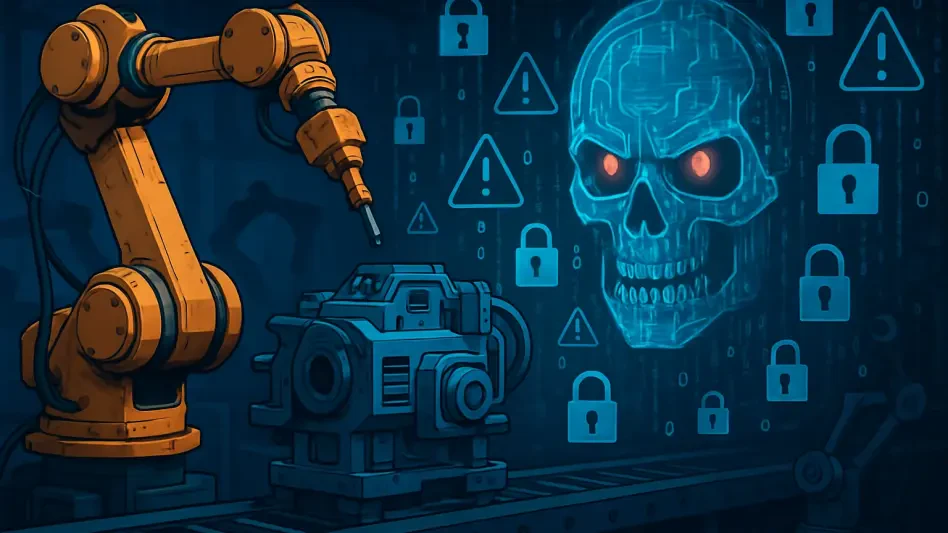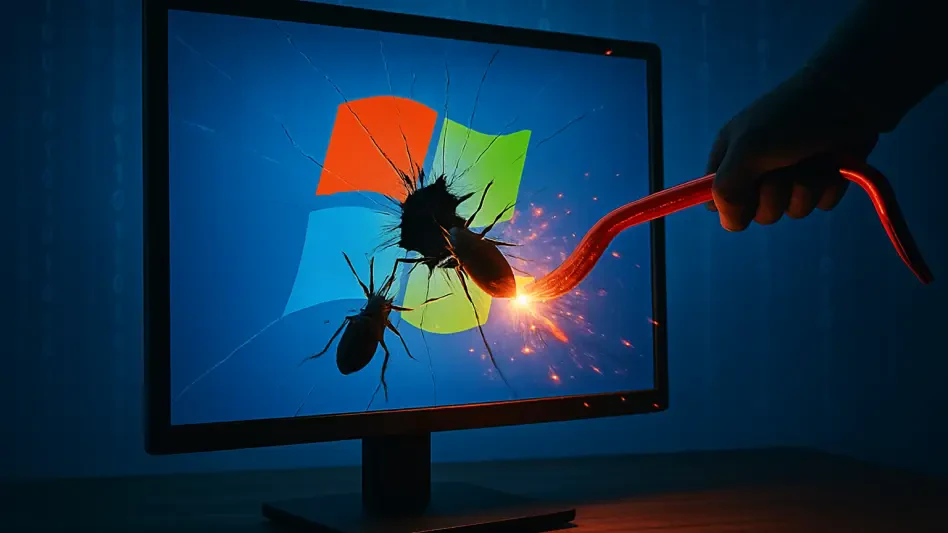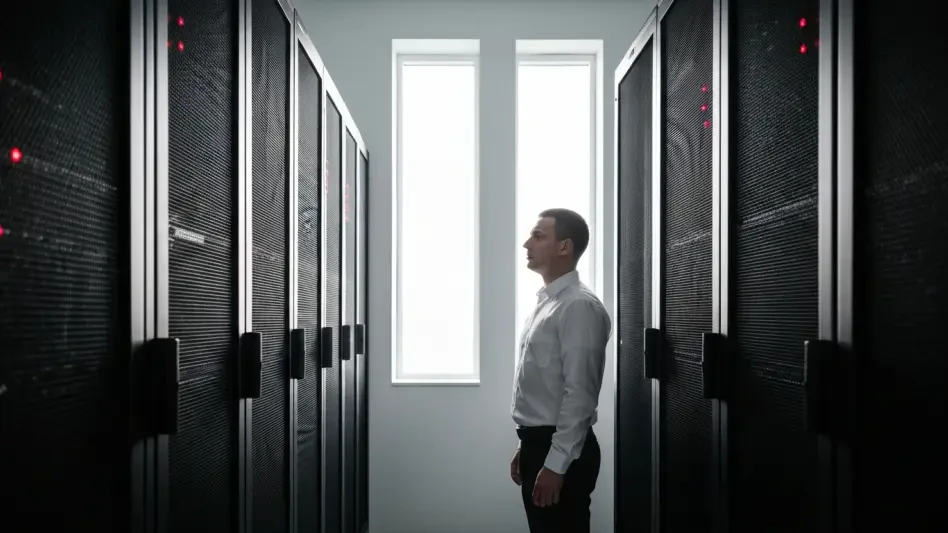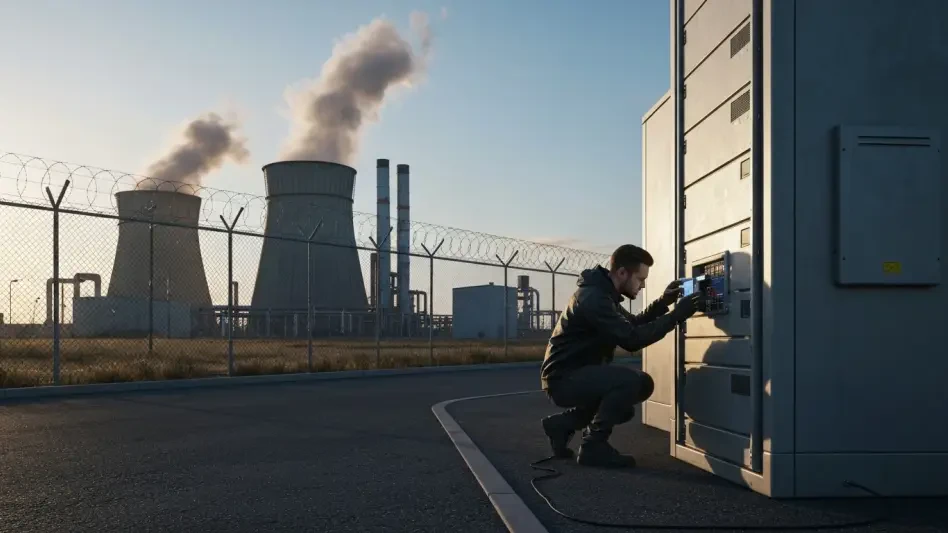Imagine a sprawling manufacturing plant, humming with the latest AI-driven automation, suddenly grinding to a halt as a sophisticated cyberattack—powered by the very technology meant to optimize operations—cripples its systems, leaving the entire operation in disarray. In 2025, this scenario is not a distant fear but a stark reality for many in the industry. As manufacturers race to integrate artificial intelligence and advanced technology into their workflows, they face an unprecedented wave of cyber threats, from AI-crafted attacks to deepfakes and relentless DDoS assaults. This roundup gathers insights, tips, and perspectives from various industry voices and reports to explore how prepared the sector truly is and what strategies are being proposed to build resilience against these evolving dangers.
The Growing Storm: AI and Cyber Risks in Manufacturing
The intersection of AI adoption and cybersecurity has become a critical battleground for manufacturers. Industry analysts note that while AI boosts efficiency through predictive maintenance and streamlined production, it also opens vulnerabilities to highly targeted attacks. A significant concern is the rapid evolution of adversarial tactics, with many experts highlighting that cybercriminals are now using AI to bypass traditional defenses, creating a pressing need for updated security frameworks.
Differing views emerge on the scale of this challenge. Some industry observers argue that manufacturers are critically behind, with only a third of leaders expressing confidence in handling AI-powered threats. Others point out a silver lining, suggesting that the growing awareness of these risks is pushing cybersecurity higher on corporate agendas, even if actionable readiness lags. This discrepancy underscores a broader tension between technological advancement and the ability to safeguard it.
The urgency to address these gaps cannot be overstated. Reports circulating among industry circles emphasize that the volume of cyberattacks has surged by over 37% in recent data, affecting trust with customers and partners. This roundup aims to unpack these multifaceted risks by drawing on diverse perspectives, setting the stage for a deeper dive into specific threats and solutions.
Unpacking the Threat Landscape for Manufacturers
AI-Driven Attacks: A Formidable Challenge
AI-powered cyberattacks represent a new frontier of risk for manufacturers, as adversaries leverage machine learning to craft precise, devastating assaults. Industry sources warn that these attacks can adapt in real time, exploiting weaknesses faster than many current defenses can respond. The consensus among cybersecurity professionals is that such threats are not merely theoretical but a dominant concern for the immediate future.
A striking point of divergence arises in how prepared the sector feels. Some surveys reveal that a mere 32% of manufacturing executives believe their organizations are equipped to counter these sophisticated attacks, painting a grim picture of vulnerability. Conversely, a smaller group of optimistic voices argues that emerging AI-based defense tools could level the playing field if adopted swiftly, though they admit widespread implementation remains slow.
The debate also touches on the dual role of AI itself. While often seen as a driver of innovation, several industry watchers caution that its accessibility to malicious actors creates an uneven risk landscape. The pressing question remains whether manufacturers can accelerate their defensive capabilities to match the pace of these evolving threats, a topic of heated discussion in boardrooms and beyond.
Deepfakes and DDoS: Escalating Operational Risks
Beyond AI-driven attacks, deepfakes and DDoS assaults are compounding the cybersecurity crisis in manufacturing. Experts across the field describe deepfakes as a particularly insidious threat, capable of undermining trust by impersonating key personnel or falsifying critical communications. Meanwhile, DDoS attacks, often fueled by geopolitical tensions, can paralyze entire operations with alarming ease.
Preparedness for these risks appears alarmingly low, with industry data indicating that only 30% of leaders feel ready to tackle deepfakes and 37% are confident against DDoS disruptions. Some cybersecurity consultants stress the potential for cascading failures, where a single attack on one facility could ripple through global supply chains, amplifying the damage. Real-world scenarios shared in industry forums highlight how such incidents erode stakeholder confidence overnight.
A contrasting viewpoint comes from a segment of tech advocates who believe that targeted investments in network redundancy and authentication protocols could mitigate these issues. However, they acknowledge that budget constraints and a lack of specialized expertise often hinder such measures. The overarching concern is clear: without robust defenses, manufacturers risk not just operational downtime but long-term reputational harm.
Supply Chain Weaknesses: An Overlooked Danger
Supply chain security, especially within software ecosystems, emerges as a hidden vulnerability that many manufacturers fail to prioritize. Reports compiled from various industry assessments show that 54% of executives admit to limited visibility into their supply chains, leaving them exposed to risks from unsupported software and under-regulated tools. This gap is seen as a ticking time bomb by many security analysts.
Some voices within the sector downplay these concerns, arguing that supply chain risks are less immediate compared to direct attacks on infrastructure. However, a growing chorus of critics counters that this complacency ignores the interconnected nature of modern manufacturing, where a breach in one link can devastate the entire chain. Regional differences in oversight practices are also flagged as a complicating factor in global operations.
The discussion pivots toward actionable oversight improvements. Several industry groups advocate for stricter vetting of supplier security credentials and greater transparency in software sourcing. Yet, the slow pace of adopting such practices raises doubts about whether the sector can address these blind spots before they are exploited on a massive scale, fueling ongoing debates at industry summits.
The Double-Edged Sword of AI: Innovation Versus Vulnerability
AI’s paradoxical role as both an enabler of efficiency and a source of vulnerability sparks varied opinions among manufacturing stakeholders. On one hand, industry leaders celebrate AI for revolutionizing production through automation and data analytics, with many citing significant gains in operational speed. On the other hand, cybersecurity experts caution that its novelty and lack of regulatory oversight create exploitable gaps for attackers.
A notable split in perspective emerges around confidence levels. While 51% of surveyed executives express optimism in defending against AI-driven threats, others argue this may reflect overconfidence rather than tangible preparedness, especially given low readiness stats for specific attack types. This disconnect prompts calls for more realistic assessments of current capabilities versus aspirational goals.
Looking ahead, some policy analysts anticipate tighter regulations to balance AI’s benefits with security needs, though they note that such frameworks are still in early stages. The consensus leans toward the necessity of grounded strategies—beyond mere optimism—to ensure that AI’s potential isn’t overshadowed by the risks it introduces, a balance that remains elusive for many firms.
Building Resilience: Strategies from the Field
The stark reality of low preparedness—less than a third of manufacturers ready for AI or deepfake threats—drives a collective push for stronger cyber resilience. Insights from multiple industry reports suggest integrating cybersecurity into core business strategy as a starting point. Notably, 55% of firms are allocating budgets for security at the outset of new projects, a trend hailed as a proactive shift by many consultants.
Practical tips abound from various sources. A common recommendation is investing in advanced tools like machine learning for threat detection, with 71% of organizations already prioritizing this approach. Additionally, fostering a cybersecurity-first culture through workforce training is emphasized, with 70% of leaders focusing on educating staff about social engineering risks, a move seen as critical to human-centric defense.
External partnerships also garner significant attention. Engaging with cybersecurity consultants to bridge expertise gaps is a strategy gaining traction, as is collaboration with insurance advisors to manage financial fallout from breaches. These combined efforts, according to diverse industry feedback, offer a multifaceted path to fortify defenses, providing manufacturers with immediate steps to counter the escalating sophistication of cyberattacks.
Securing the Future: Lessons from 2025’s Challenges
Reflecting on the discussions that shaped 2025, it was evident that cybersecurity had transformed into a non-negotiable imperative for manufacturers embracing AI and automation. The insights gathered from varied industry perspectives painted a picture of an industry grappling with sophisticated threats yet beginning to rally around strategic solutions. The urgency to protect operations and maintain trust with partners had never been clearer.
Moving forward, manufacturers were encouraged to adopt proactive measures such as Zero Trust Architecture to secure every access point rigorously. Elevating cybersecurity to board-level discussions proved essential in embedding resilience as a core value. Exploring further resources on adaptive security frameworks and investing in continuous employee training emerged as vital next steps to stay ahead of evolving risks.
Beyond immediate tactics, a broader consideration lingered on how to sustain momentum in this fight. Collaborating with industry peers to share threat intelligence and advocating for standardized regulations offered a path to collective strength. These actions, built on the lessons of 2025, positioned manufacturers to not only defend against current threats but also anticipate the challenges of tomorrow.








